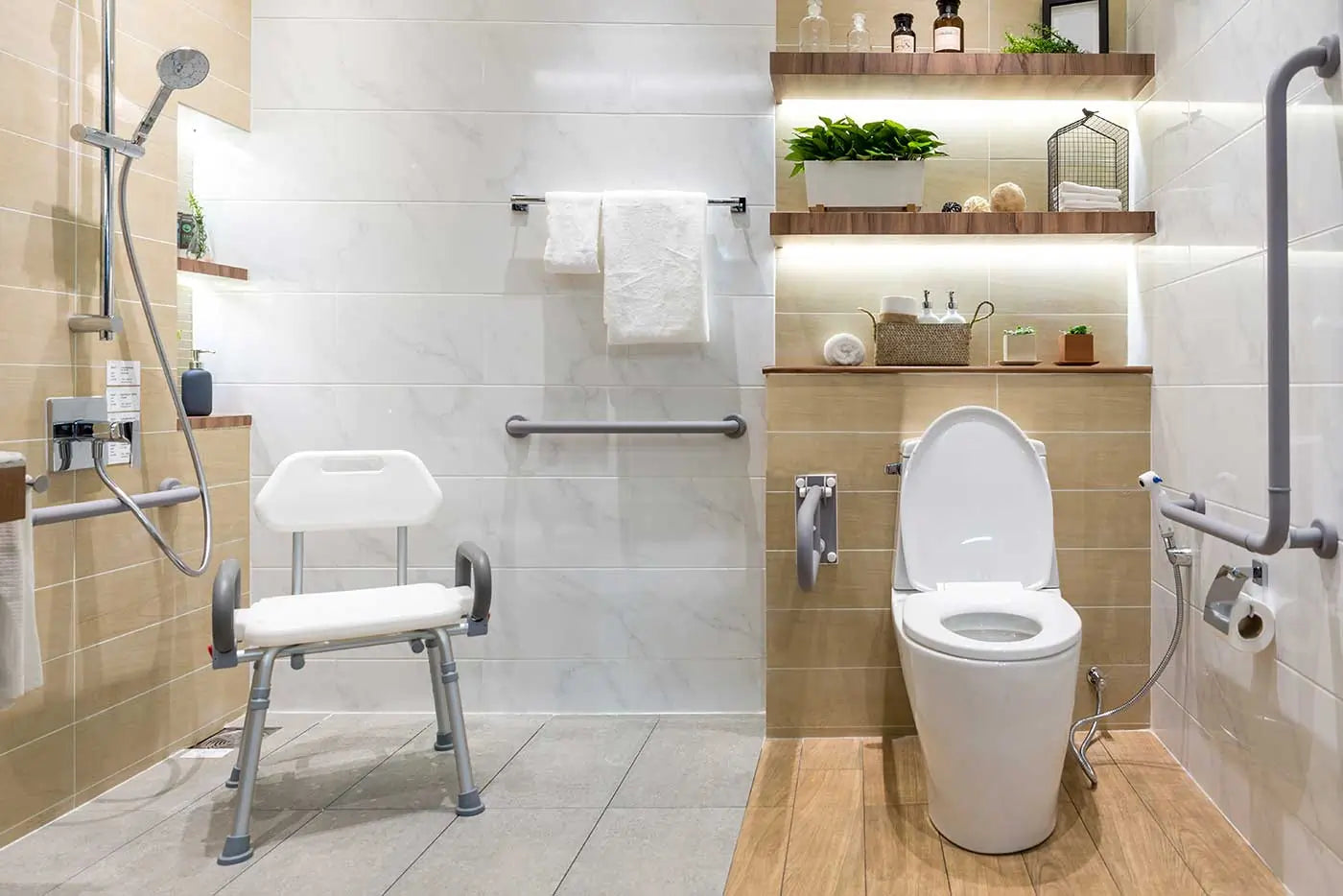
An Essential Guide for Handicap Bathroom Remodeling
In order to make your home more accessible for people with disabilities, there are some modifications that need to be made. With the assistance of professionals, you may narrow them down to find the perfect house for you and your family.
With the right preparation and attention to detail, you or a disabled family member may get the greatest possible results from a remodeling job. Here are a few suggestions that will come in handy.
This article explains what it takes to design a bathroom accessible for persons with mobility issues, including suggestions for fittings and handicap accessories.
1. Shower Chairs
The use of a shower chair during rehabilitation helps ensure the safety of showering for those with physical disabilities. A shower chair eliminates the risks associated with taking a bath, such as tripping and falling or entering a tub without being capable of safely exiting.
An injured person, someone with a lifelong impairment, or an older person who has trouble standing up in the shower would all greatly benefit from this type of chair. They may take a shower whenever they want without worrying about disturbing anyone or waiting for help.

2. Raised Toilet Seats
One may employ a raised toilet seat in lieu of or in addition to a standard toilet seat if necessary. The purpose of a raised toilet seat is to shorten the journey a disabled individual must make to the toilet. Disabled persons who have trouble sitting on and rising from the toilet may discover that raising the seat just several inches makes a huge difference.
Whether your toilet bowl is round or square, you may be certain that the vast majority of raised toilet seats will suit. There are, nonetheless, subtle distinctions in the manner in which they are secured to the commode and the presence or absence of arms.
3. Toilet Safety Frames
Instead of investing in a new, higher toilet seat, you may instead install safety frames on your current one. Having handles on each side of the toilet makes it easier to sit down and get up from a sitting posture on the toilet.
The disabled may continue living independently so long as they use a toilet safety frame since it is simple to install and strong enough to support the user's body weight.
There are a variety of toilet safety frame alternatives available, from freestanding ones for light balance assistance to versions that attach to the underside of the toilet through the screws at the rear.
4. Grab Bars
Of course, not every bathroom will be spacious, but even the smallest of loos should have space set aside for installing a set of handicap grab bars. These should not only be fitted near the bathroom's commode but also within the shower or tub itself.
Serious injuries may happen from a slip and fall, especially in wet environments like toilets. Scratches, scrapes, broken bones, and even catastrophic brain damage are all possible outcomes of such an event.
People with mobility impairments may gain independence in their daily lives by installing grab bars in areas where they may need help.
5. Rotating Space
Wheelchair users are the primary audience for most accessible bathrooms. Therefore, it is critical that the bathroom has a sufficient turning radius for the wheelchair user. They need a clean area over 60 inches in circumference to revolve freely. It enables a complete turn of 180 degrees inside the area.
6. The Entry
It's common for wheelchairs to range in width from 24 to 27 inches. A handicapped bathroom's doorway should be at least 32 inches wide for this cause.
The most ideal entryway width for ease of movement is 36 inches. In certain houses, there is a thin door sill placed on the ground just inside the entrance to each individual room. You need to get rid of it so the floor is perfectly level and your wheelchair won't have to bounce.
Don't forget about the bathroom door. It might take a lot of extra time for persons in wheelchairs to use the bathroom if the door is opened either inside or outside. Alternatively, install a sliding door to facilitate a wheelchair going through the bathroom. Not to mention the sleek aesthetic they provide to any room!
7. Sink Area
Inaccessibility to sinks is a major problem for those who use wheelchairs. Typically, there will be storage cupboards installed behind the sink in a classic lavatory. If you want to be able to put your knees underneath the sink, then that space has to be empty. To make things even more convenient, the whole vanity unit should be installed at a level just below standard height.
8. Use Tilted Mirrors
Mirror upgrades are an absolute need for people with disabilities. Even though mirrors are typically installed just above the sink, they may be placed anywhere for the user's convenience. Tilting the mirrors is the solution to making them accessible to those who use wheelchairs. When you're in a wheelchair, it's much simpler to look over the sink and do your bathroom routine if the mirror is tilted.
9. Your Bathing Options
When remodeling a bathroom to accommodate a wheelchair, a standard shower or bathtub is generally not an option. To avoid this, remodel your bathroom to include a walk-in shower or bathtub.
The wheelchair will encounter no obstacles while entering a barrier-free shower. Moreover, a shower bench may be built in the shower to provide you with a comfortable place to sit while you wash.
Rolling your wheelchair up to the entrance of a walk-in tub makes it simple to move from the wheelchair seat to the shower bench seat. Such walk-in bathtubs may also be made simpler to maintain by installing hand-held shower heads.
10. Lighting
To reduce the risk of falls, it is essential that your bathroom be well-lit. In contrast, if you use a wheelchair for mobility issues, you might find it more challenging to access items like light switches.
Light switches should be positioned lower on the walls so that they are more likely to be turned on when disabled people enter and exit the restroom. You might also install motion detector lights that switch on as soon as you go into the bathroom.
11. Motion Activated Faucets
In spite of the fact that the sink would be lower, the installation of motion-sensored fixtures may make life a little simpler. The faucets that you can switch on by waving your hands over them should definitely be among your purchases.
12. Slip-proof Flooring
People with disabilities have an increased risk of severe injury from falls. The anti-slip coating has to be applied to every area in the bathroom, notably the tubs and showers. When it comes to avoiding mishaps, this is one of the cheapest and most efficient options.
Disabled individuals may greatly improve their day-to-day lives by customizing the bathroom to their needs. Every person has the right to live in a home that provides a sense of safety and security, minimizing the possibility of injury caused by falls or other accidents.

